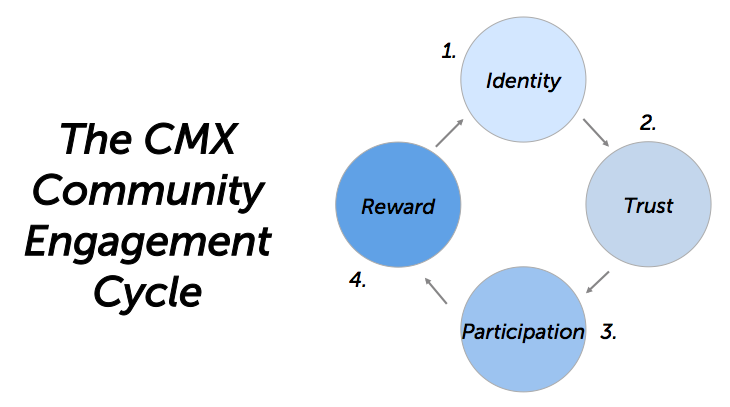The CMX Community Engagement Cycle: A Case Study and Model for Building Vibrant Communities

When you first decide it's time to build community, knowing where to start can feel overwhelming. Your head may fill with questions like:
- What program do I build first?
- Do I build first and then figure out what works, or do I talk to potential members until I know what to build?
- How do I know what success even looks like?
- Does the business I work for care about this? Do I care deeply about this?
You already know that you need to define a business need for community and create value for your members. "Start with why," Simon Sinek says. You’re past that point. You want to delve deeper. You want to spark engagement when you launch and try new programs, and you want a process for doing so.Ladies and gentlemen, allow us to present to you the CMX Community Engagement Cycle, which combines David MacMillan's Sense of Community Theory (1986) with the concept of a Commitment Curve into a visualization and checklist for building and deepening your community's engagement.This model helps you to visualize how to get people more and more deeply engaged in your community over time (and what success looks like when they do) and how to identify gaps that may be causing them to lose interest in your community or to stop engaging more deeply over time.There are a lot of band-aids in community building. This is not one of them. This gets to the core of what is causing your community problems and gives you the tools to face them head on and build an unbreakable foundation for engagement in your community.With this model in hand, you can see the gaps in your current programming and then create new programming and content (or revise the old, broken stuff) so that you can continually work to cycle people into deeper and deeper communities.Want a vibrant community? This model helps you visualize exactly how to do that.
The Community Engagement Cycle
Below, we walk you through the cycle and illuminate how it works with one company's community program, Remind's Connected Educator Community. It serves as just one example of how the cycle works in action. This is how communities large and small work to engage their members and the most successful communities are those that realize this model fully.









.svg)

